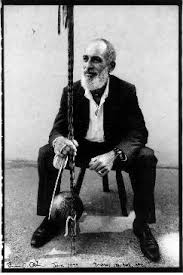12 November 2014 – Mestre Nô – Norival Moreira de Oliveira
In tonight’s class the salient point for me was when Mestre Poncianinho talked about the ‘tesoura’ – and how Mestre Nô was a master of the tesoura – and this video was mentioned, and there it is, at 50seconds, a very fast moving one, Mestre João Pequeno just about gets out of its way.
Naturally. this has opened a whole new door – a Mestre I didn’t know much about and the internet at my fingertips. I love the internet! I love all the dedicated people who have uploaded these wonderful videos, some so old you can barely make out what’s going on. People who share their knowledge with the world. Open Source people! I love you! This entry is dedicated to you and to Mestre Nô.
Wikipedia is my starting point, as it often is…
And the image search reveals a very cool looking capoeirista. Look at him: cool as a cucumber and very dapper!

Norival Moreira de Oliveira, born in Bahia, in 1945 (same year as my mother). He still lives and works with Capoeira there.
He founded Capoeira Academies Retintos, Orixas da Bahia and Capoeira Palmares. He is founder, president, and grand master of Associação Brasileira Cultural de Capoeira Palmares (ABCCP) – an organization dedicated to teaching, promoting and maintaining the traditions of Capoeira Angola.
He is known as a ‘Mestre of Mestres’ on account of grading so many mestres and teaching so many students. Here are some of the mestres graded by him: M.Braulio, M.Alabama, M.Dinelson, M.Túnico, M.Lincoln, M.Lázaro, M.Dindo, M.Dunga, M.Beto Baraúna, M.Henrique, M.Sabiá (source, wikipedia)
His first mestres, in Massaranduba, in the outskirts of Salvador, were Mestre Nilton, Mestre Zeca and Mestre Pirrô – and they used to organise street rodas, the famous ‘Roda de Mestres’, frequented by various mestres, including Mestre Waldemar, whom I was researching recently. Mestre Nô was regularly at these rodas, hence him being on so many old YouTube videos.
Aged 20 he opened his first Capoeira Angola school and he is known for an Angola style from the outskirts (I wouldn’t say suburbs of Salvador, these were poor areas – and a ‘suburb’ is something more middle class), which was different from what was seen in the centre, touristic areas, of Salvador.
Leave a reply with any comments/suggestions.